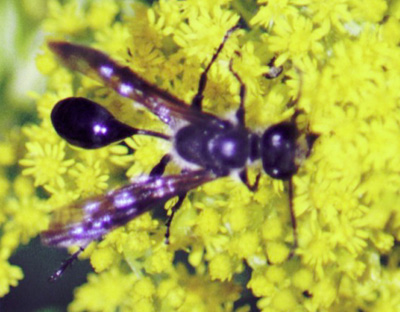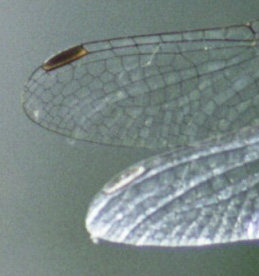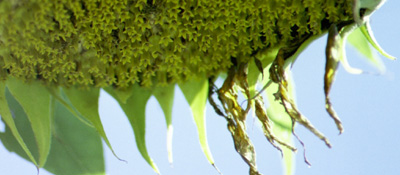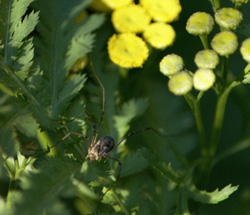Three Faces
In the upper right hand corner of the cluttered bulletin board above my desk at work are three images.

The first is a picture of Kaethe Kollwitz' 1935 sculpture Rest In The Peace Of His Hands. I don't remember when or from where I scissored out this image, but I've had it for years and it's been tacked or taped to a long succession of my walls. I suspect it dates from around 1986. That's the year I wrote a long poem called "The Mummies of Qilaqitsoq," about a group of several women and one infant that had been discovered in 1972, mummified by cold, in a Greenland cave. The remarkable cache was dated to the 1400s, and a photo of the dead infant boy reminded me of Kollwitz' funerary bronze. At that time my son was six and, like many new mothers, I was living in a constant, harrowed state of anticipatory grief. Kollwitz, of course, is an artist who speaks directly to protective maternal love and maternal grief .
This mezzo-relievo she cast in bronze
entitled “Rest In The Peace Of His Hands,”
was intended for her tomb -- Kollwitz,
this artist of mother, child and death.
Her head, with a slight tilt, leans
back into his chest, so her face,
in an ambiguous repose, lies
between bronze drapes she holds fast
beneath her chin even in sleep
or death. Her fist is small
and heart-shaped. It lies in the angle
formed by the two large hands
that surround and hold her,
encircling, but not grasping her.
It is an image of Judeo-Christian consolation: God as source, parent, protector, over-arching wing, and the place to which we return for our final, sheltered sleep.
The second image is of a meditating Buddha. It is a slender Thai Buddha, attenuated and serene.
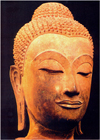
It is also an icon of repose. The expressions on the two faces are similar -- relaxed, free of strain, at peace. But it's not sleep or death that is depicted on the Buddha's face but awakening, which is also called, paradoxically, cessation -- cessation of all that separates us from the ground of being, Buddha-nature. Cessation of greed, hatred and the illusion of a separate self.
The last is a reproduction of a painting by Goya, Portrait of General José Manuel Romero that I clipped from a cover of a medical journal.
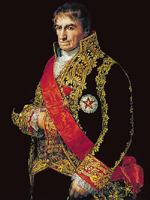
The tiny head, its face scowling and dyspeptic, sits atop a gigantic torso, clad with full military grandiosity. With his arcanely embellished, out-thrust chest with its plates of stiff embroidery and broad scarlet ribbon bow-tied above the buttocks, he reminds me of a rooster, tail and all. He's the cock of the walk who struts and blusters boisterously all about the barnyard.
Cock-a-doodle-doo ! Th' terrr'sts, see, they hate freedom ! Make no mistake about it, ah'm a wo-ah prez-nit ! An ah'm gonna stay the course !
He's sublimely ridiculous, but dangerous and in charge, the deadly antithesis to both Kollwitz's Parent-and-child and the meditating Buddha.
Turn on CNN and you will see him in all his squawking, lethal guises.

The first is a picture of Kaethe Kollwitz' 1935 sculpture Rest In The Peace Of His Hands. I don't remember when or from where I scissored out this image, but I've had it for years and it's been tacked or taped to a long succession of my walls. I suspect it dates from around 1986. That's the year I wrote a long poem called "The Mummies of Qilaqitsoq," about a group of several women and one infant that had been discovered in 1972, mummified by cold, in a Greenland cave. The remarkable cache was dated to the 1400s, and a photo of the dead infant boy reminded me of Kollwitz' funerary bronze. At that time my son was six and, like many new mothers, I was living in a constant, harrowed state of anticipatory grief. Kollwitz, of course, is an artist who speaks directly to protective maternal love and maternal grief .
This mezzo-relievo she cast in bronze
entitled “Rest In The Peace Of His Hands,”
was intended for her tomb -- Kollwitz,
this artist of mother, child and death.
Her head, with a slight tilt, leans
back into his chest, so her face,
in an ambiguous repose, lies
between bronze drapes she holds fast
beneath her chin even in sleep
or death. Her fist is small
and heart-shaped. It lies in the angle
formed by the two large hands
that surround and hold her,
encircling, but not grasping her.
It is an image of Judeo-Christian consolation: God as source, parent, protector, over-arching wing, and the place to which we return for our final, sheltered sleep.
The second image is of a meditating Buddha. It is a slender Thai Buddha, attenuated and serene.

It is also an icon of repose. The expressions on the two faces are similar -- relaxed, free of strain, at peace. But it's not sleep or death that is depicted on the Buddha's face but awakening, which is also called, paradoxically, cessation -- cessation of all that separates us from the ground of being, Buddha-nature. Cessation of greed, hatred and the illusion of a separate self.
The last is a reproduction of a painting by Goya, Portrait of General José Manuel Romero that I clipped from a cover of a medical journal.

The tiny head, its face scowling and dyspeptic, sits atop a gigantic torso, clad with full military grandiosity. With his arcanely embellished, out-thrust chest with its plates of stiff embroidery and broad scarlet ribbon bow-tied above the buttocks, he reminds me of a rooster, tail and all. He's the cock of the walk who struts and blusters boisterously all about the barnyard.
Cock-a-doodle-doo ! Th' terrr'sts, see, they hate freedom ! Make no mistake about it, ah'm a wo-ah prez-nit ! An ah'm gonna stay the course !
He's sublimely ridiculous, but dangerous and in charge, the deadly antithesis to both Kollwitz's Parent-and-child and the meditating Buddha.
Turn on CNN and you will see him in all his squawking, lethal guises.


